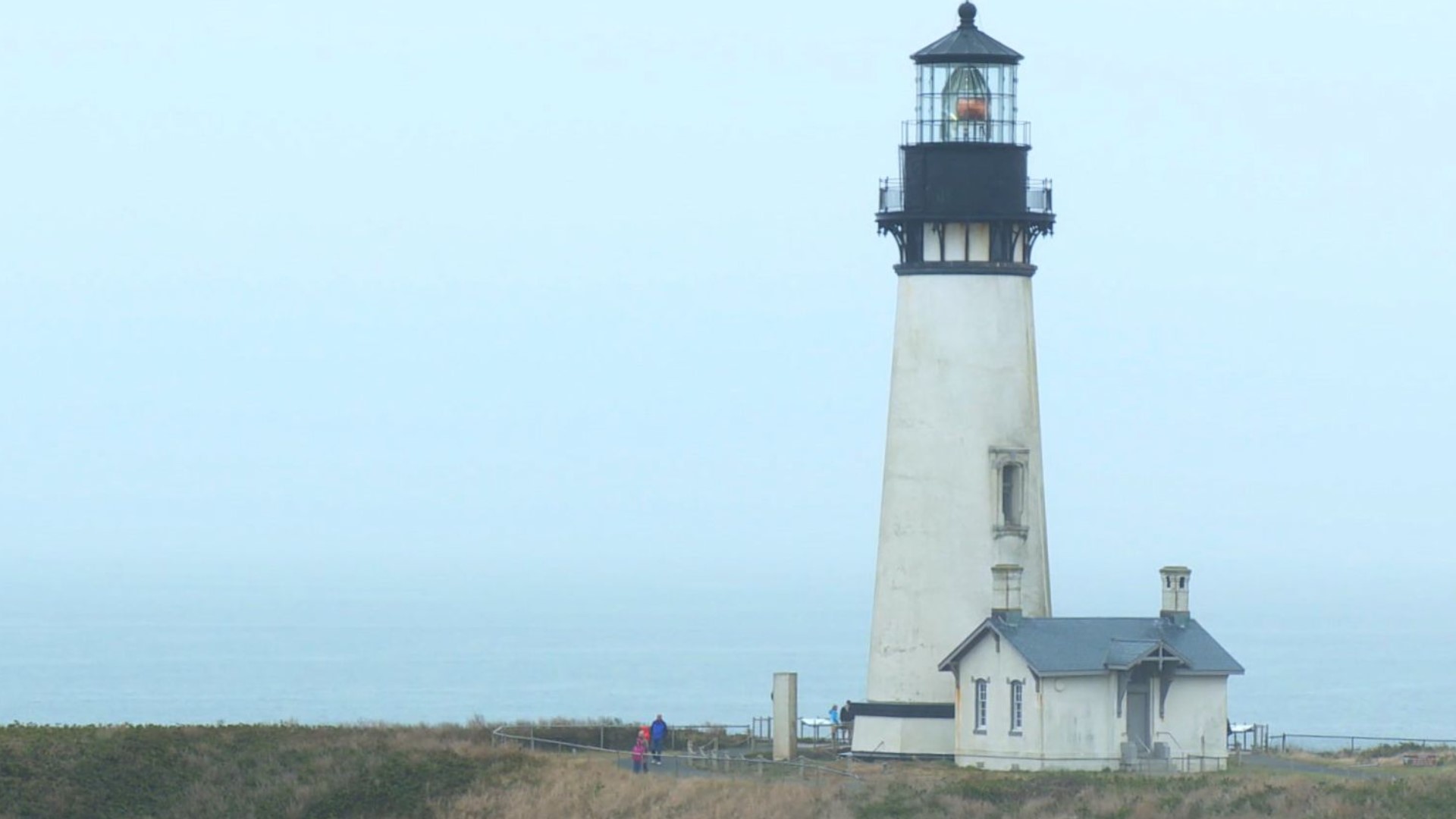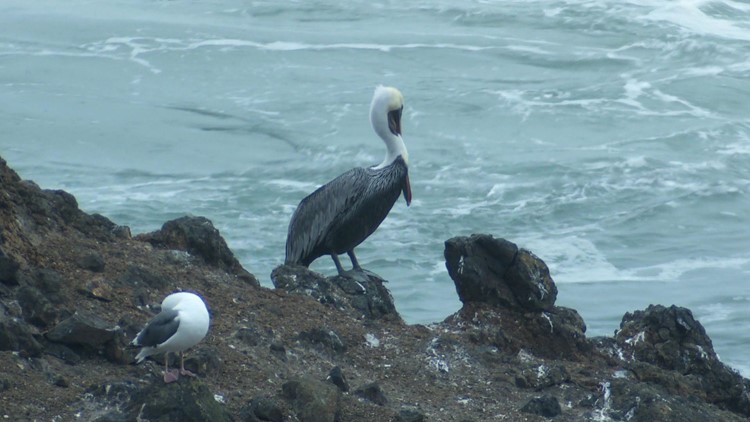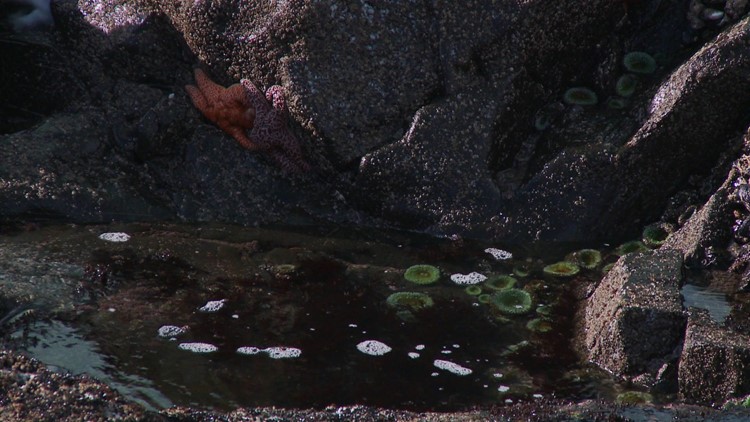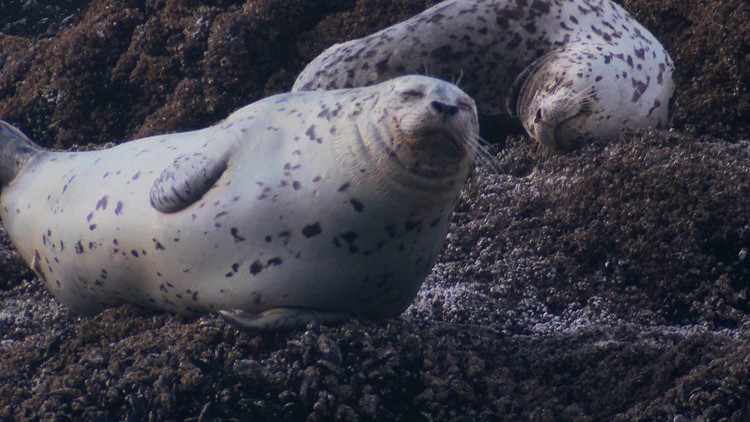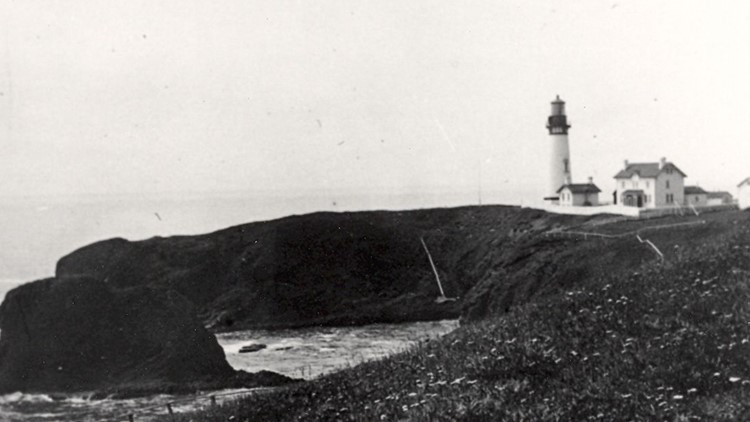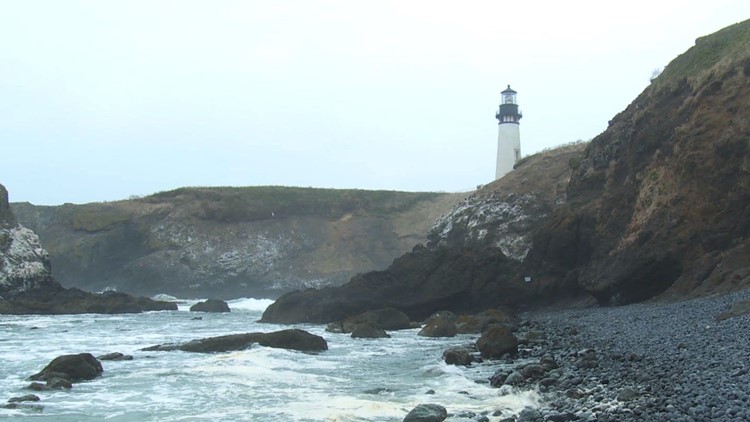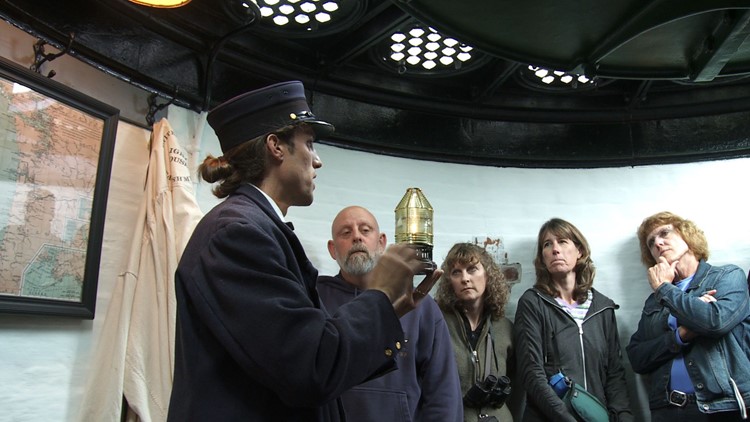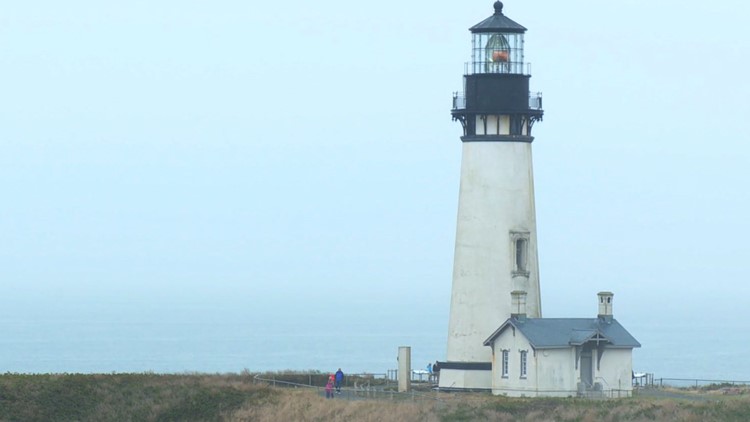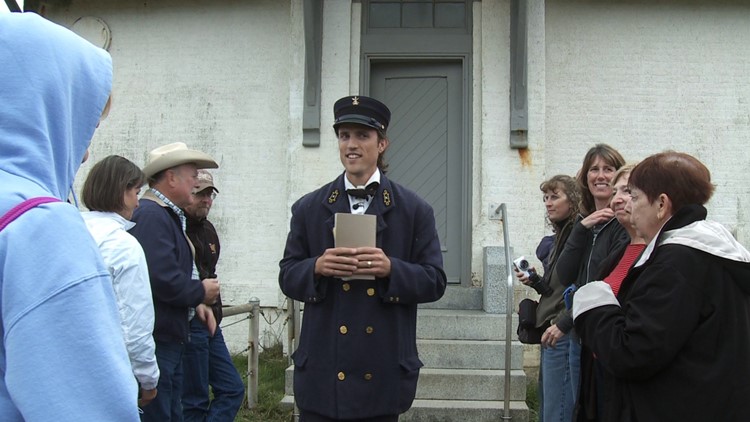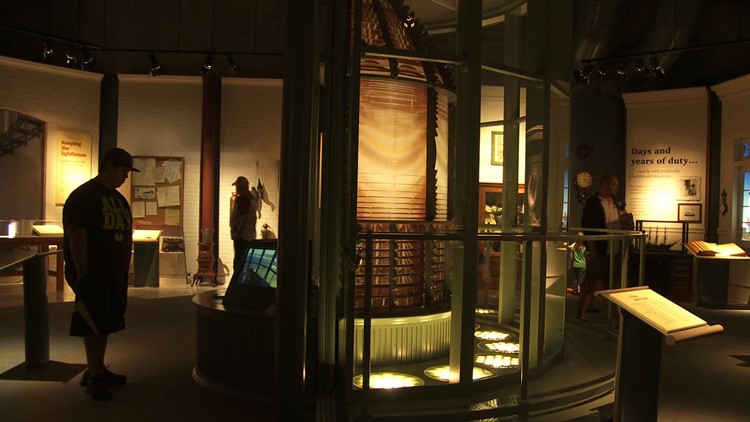YAQUINA, Ore — This week, we go inside one of the finest of Oregon’s prized "whitewashed wonders" that’s also a parkland and a natural area filled with surprises at Yaquina Head Lighthouse.
As the seasons change, surf and sand often seem to merge into a golden, sun-burnished moment along the Oregon coast and where lighthouses can provide exciting history lessons that are worth exploring.
The rocky headland called “Yaquina” (pronounced “Yuh-quinn-uh”), marked for miles by a towering white sentinel on the central Oregon coastline, is a wonder.
A towering white light called “Yaquina” captured Mark Bistranin’s heart more than twenty years ago.
He’s come back today to give the memory new life; one brush stroke at a time!

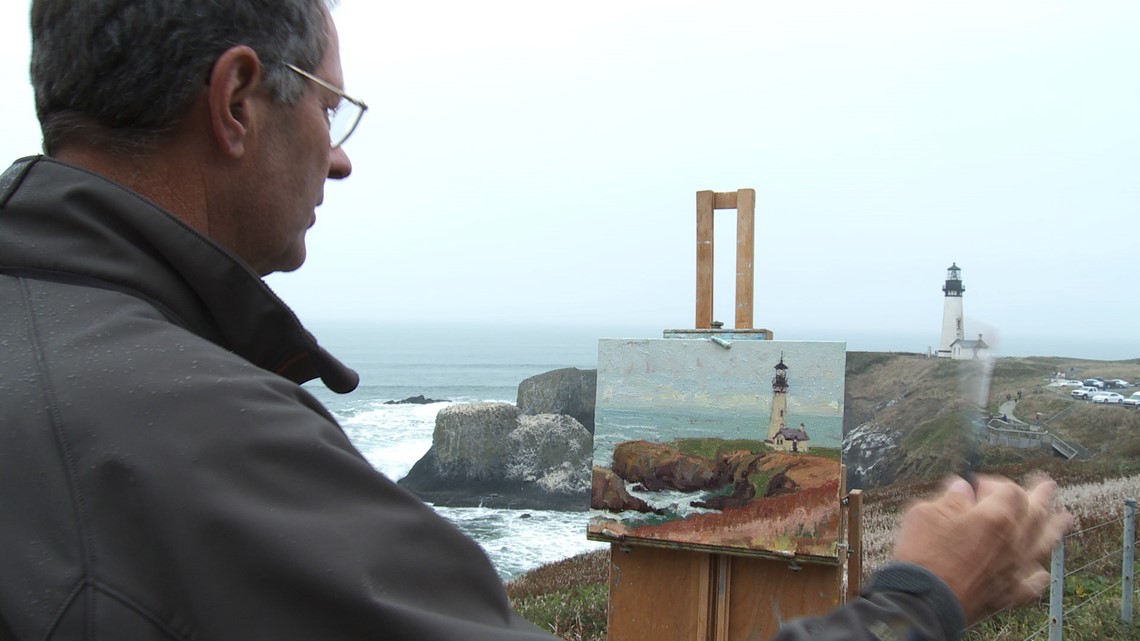
“It’s my favorite that I’ve ever seen and it’s just the feeling of a light on a late summer day,” said the longtime artist. “An this view of the lighthouse is remarkable. I just love it.”
It’s not hard to love a light that’s stood since 1873 and where folks still line up to go inside
Once a lonely outpost above rocky cliffs, Yaquina Headland and Lighthouse are anything but lonely on clear days as schoolchildren scamper and tourists wander across some of the most accessible tidepools of the area.
Managed by the Bureau of Land Management, the Yaquina Head Outstanding Natural Area is home to many seabirds and other sea life. Harbor seals lounge on a nearby series of low rock islands, the mass migration of gray whales can easily be observed and low tide reveals seaweeds, sea stars, hermit crabs, purple urchins and anemones in the nearby “marine gardens.”
Yaquina Headland: A whitewashed wonder
Yaquina Headland has endured for eons, and according to BLM’s Jay Moeller, the site’s geology is the reason it was chosen for a lighthouse station in 1871:
“Yaquina Headland is really an ancient lava flow that originated fourteen million years ago in eastern Washington and then spread three hundred miles to the west before reaching the ocean. Despite a battering by ocean waves, relentless winds and seasonal rains, the basalt rock refuses to be worn away as quickly as surrounding beaches.”
The headland’s enduring prominent face made it a natural choice for the lighthouse. Moeller pointed out some of the finer details of the massive white, conical-shaped light tower — starting with the 114 steps in the circular stairway to the top:
“The Yaquina Lighthouse is the tallest and second-oldest lighthouse still in operation,” added Moeller. “It provides the headland its most distinguishing feature. But it’s what you can’t see that’s also amazing, for it’s actually built of double-walled brick, more than 370,000 of them, for insulation and dampness protection.”
The light was equipped with a Fresnel lens that was manufactured in Paris in 1868. It was shipped from France to Panama, transported across the isthmus, and then shipped to Oregon. What a journey!
With a laugh, Moeller said that Yaquina Head was always a popular tourist attraction. “When it was built in 1873, the ninety-two-foot tower was a skyscraper, and there were so many tourists who came to see it, that the keepers had to ask the local officials to declare visiting hours. It was the only way they could get their work done and get some sleep.”
Yaquina Headland: A whitewashed wonder
Several miles of nearby trail connect visitors to various interpretive sites throughout the headland, as do abundant information kiosks, waysides, and observation decks.
You’ll likely want to spend time in the Yaquina Head Interpretive Center to learn more fascinating natural and cultural history.
Displays teach about the plentiful wildlife of the area and introduce the people who endured hardship to provide service.
Chris Burns, a BLM volunteer and historian, explained that a hundred years ago this central coast region was so isolated, especially in winter, that the light keepers and their families had to be a very dedicated lot:
“The men had a variety of responsibilities, but the main thing was always making sure the light was working. That service was critical above all because there were so many shipwrecks along our rugged coast in those days. The light had to stay on at all costs. It was more important than anything else out here.”
A trail leads from the interpretive center to an observation deck, passing under the main entrance road via a tunnel to a dramatic vista of the ocean and Newport — just three miles away.
It’s an amazing place where Mother Nature has created something beautiful — a natural place where marine creatures can live and humans can easily observe them.
Be sure to watch the weekly half hour program of Grant’s Getaways. The show airs each Saturday and Sunday at 4pm on KGW.
For something different, you can follow my Oregon adventures via the Grant’s Getaways Podcast: Each segment is a story-telling session where I relate behind the scenes stories from four decades of travel and television reporting.
You can also learn more about many of my favorite Oregon travels and adventures in the Grant’s Getaways book series, including:
"Grants Getaways I," Photography by Steve Terrill
"Grant's Getaways II," Photography by Steve Terrill
“Grant’s Getaways: 101 Oregon Adventures,” Photography by Jeff Kastner
“Grant’s Getaways: Guide to Wildlife Watching in Oregon,” Photography by Jeff Kastner
“Grant’s Getaways: Oregon Adventures with the Kids,” Photography by Jeff Kastner
The book collection offers hundreds of outdoor activities across Oregon and promises to engage a kid of any age.

